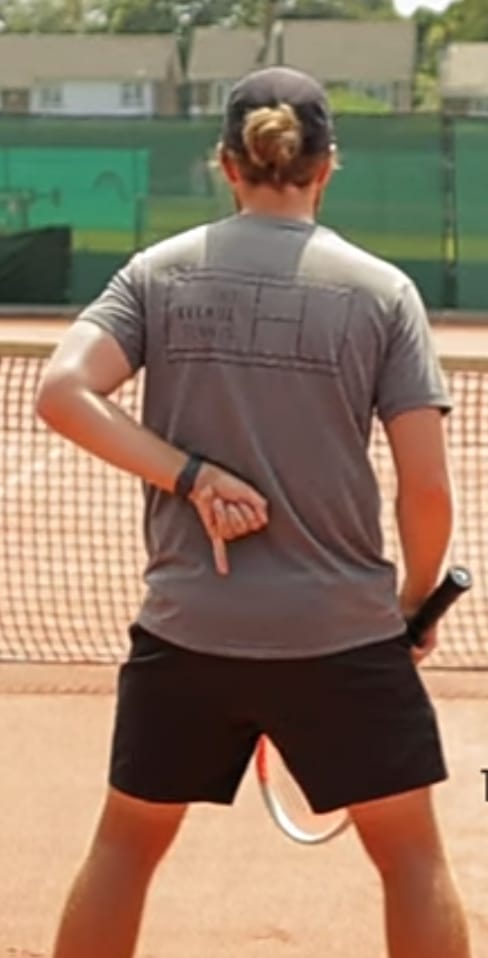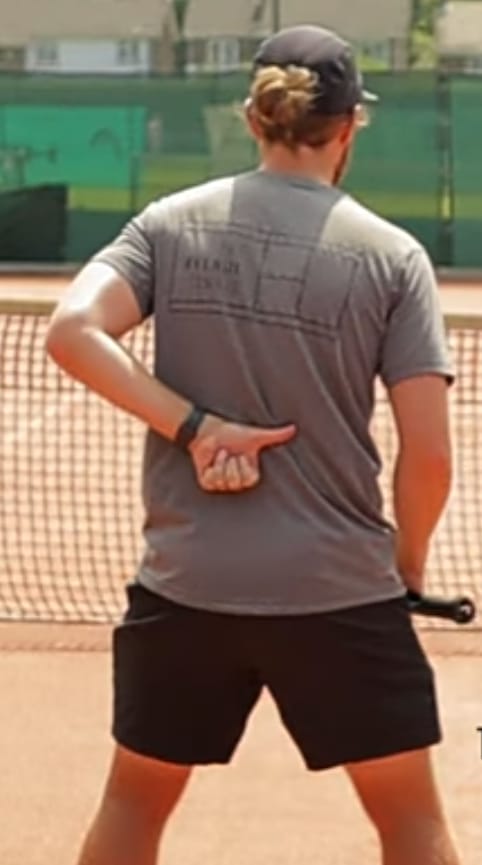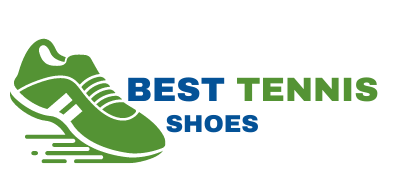Have you ever seen players’ doubles signals behind their back on TV? Do you know what hand signals in doubles tennis mean?
And why do they do that? If they want to tell their partner something why not do it face to face? If these questions are in your mind, you have come to the right place.

We will cover everything related to hand signals in tennis. The main purpose of hand signaling is to keep both players on the same page to maximize the strength of the team on the court. But here one point is notable, both of the players should know the meaning of signals.
If one player is not aware of the signal, it can be a complicated thing. Players at the net use the same hand signals used by tennis doubles players to indicate where the server should serve and where they will move after the serve.
Hand Signals in Doubles Tennis
Also Read Tennis Racquet String Patterns
What Do These Signals Mean?
When a signal is given, the player at the net will always be on the other side of the net, while his partner will make a decision whether to accept or reject that signal. Both players must be committed to executing what they have agreed upon before the point starts, otherwise, the team will be out of sync.
No matter who is serving or receiving, the order of the signals is the same; the first signal indicates where the shot will be hit, and the second indicates where the net-man will be after the shot is hit.
Serve Spot
The first signal player apply is the serve direction. Because there are five targets t hit at serve. In many cases, players make it simple by restricting themselves to just 3 servers. As the standard servers are five, we will discuss all of them. Here is a brief explanation of each server.
Body Serve
When the player uses only the middle finger for signaling, it means he is asking his partner for body serve.
Wide Serve

Wide serve is when a player show signal by his pinky finger.
T-Serve

When the player shows his thumb to the right side it is called, T-Serve.
Body Backhand

Showing the middle finger down is called the body backhand.
Body Forehand
When the player shows his pinky finder and middle finger downside, it is called body forehand serve.
Movement at Server Point
A second signal indicates to the net-man where to move after the serve has landed in the box. This portion could be signaled in three ways: stay, poach, and look to poach.
- Pinch
- Stay
- Look For It
- Pouch
What are The Benefits of Hand signals in Double Tennis?
If you are playing doubles, you might wonder why even use hand signals? Surely we can just talk between us? We are close enough to each other.” Of course. Y’all could use them, but there are some advantages to doing so.
In order to be successful in a play, the other team needs to see how their teammates are positioned. Sports, including tennis, demonstrate this. When the quarterback emerges from the huddle, he often has a play drawn up. Using signs, he may change the play depending on how the defense is positioned.
Depending on where the returner stands within the baseline, you may pick a different serve target when he is several feet from the baseline. The movement called for a returner’s partner may differ if he starts on the baseline than he would if he was at the net.
Also Read>> Semi-Western Forehand Grip
Signs are also useful because they provide a clear vision of what the person wants to accomplish. When a player is ready to serve or return, it is much easier to visualize what they want to happen. A doubles team must be able to communicate clearly and accurately on the court to avoid miscommunications. If the team does not move together as a team, they will be exposed.
Is it necessary to Approve the Signals?
All of this is quite complicated and there are a few things you need to remember. You don’t have to agree with your partner. Signals are simply recommendations. Serving and returning is ultimately the responsibility of the person who hits the serve or returns. When it comes to this, you must not agree to hit shots you are uncomfortable with a certain situation. Don’t be afraid to turn down the call that your partner suggested.
It is as simple as saying “yes” or saying “no.”
It is the server’s or returner’s responsibility to verbally approve or deny the call. After the server agrees to serve the spot, the net-man begins showing the signs for movement after he switches the signal until he finds a serve he is happy with. A server determines where a partner should go, following the same procedure as before.
Below is an example of where a partner should go. He begins his first call by saying “no” to the partner at net, but the server wants to go body. A body serve is then requested, and the server agrees. Although the net-man shows signs of poaching, the server is hesitant about this approach as well. With a “no,” he shrugs it off.
Finally, the net person shows the fake poach, and the server agrees. Now he’s ready to begin the point with a play that he feels will work.
Final Words
We hope our post about the Hand signals in doubles tennis will be beneficial for you. It will help you understand different types of hand signals and their purpose. If you want to know more, you can reach out to us in the comments section. You can help us by sharing this information with others if you find this article helpful.


